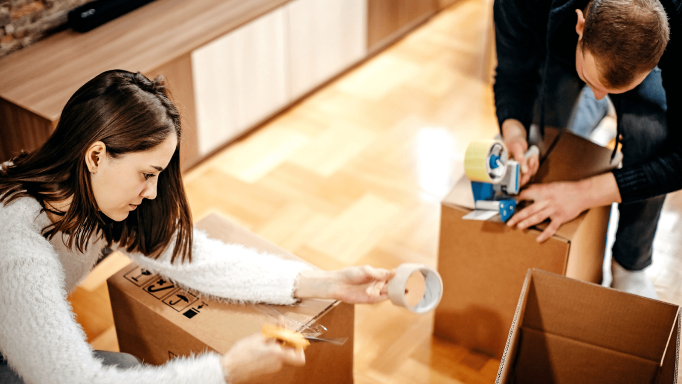How to Plan a Seamless Move
Moving should be exciting, but too often it becomes a headache. Fortunately, with the right preparation, most of the stress homeowners typically encounter can be avoided. To that end, here are a few easy tips to help plan a seamless move:
Consolidate Paperwork
Moving can get complicated. There are a lot of details to keep track of, and a lot of paperwork as well: contracts, estimates, inventories, service orders, bills of lading, lease agreements, not to mention personal documents such as birth certificates
and financial records.
Because it’s impossible to predict when a question might arise during a move, it’s always a good idea to keep relevant paperwork together in a single folder. That way, no matter the problem, homeowners don’t have to hunt around for the
answer.

Create a Schedule
Leaving things to the last minute almost guarantees something will be overlooked. In order to stay on top of their move, homeowners should take a moment at the start to write down everything that needs to be done and when.
Setting deadlines for important tasks such as purchasing moving supplies, making travel arrangements, and organizing belongings ensures the move proceeds smoothly from one stage to the next.
Book Movers in Advance
Once homeowners have picked a date for their move, they should contact a moving company right away. Schedules fill up fast, especially during spring and summer ‒ the height of moving season. Weekends are busiest, so homeowners need to reserve a date as
far in advance as possible, otherwise their entire plan might be thrown off.
Transfer Utilities
No homeowner wants to walk into their new home, only to discover the lights don’t work. Contact gas, electricity, and internet providers at least two weeks ahead of time to set up service. Everything in the new home should be turned on the day before
the move, while everything in the old home should be shut off the day after.
Renovate Before Moving In
New homes generally need a bit of work. Perhaps it’s a fixer-upper or maybe it simply needs better lighting or a new coat of paint. Regardless, it’s always easier to upgrade a house before moving in rather than after.
While touring the property, homeowners should mark down any improvements they’d like to make and tackle as many as they can prior to the move. This might not be feasible for some moves (e.g. interstate moves), but working in an empty house is much
simpler than a full one. Renovations move a lot faster without rugs, furniture, televisions, and pictures getting in the way.
Start Packing Early
Boxing up an entire house is both exhausting and time-consuming. It can’t be done in a night or even a week, at least not without creating problems. Tasks tend to pile up as a move approaches, which leaves less time for packing. Consequently, the
best approach is to start early.
When drawing up their moving schedule, homeowners should set aside an hour or two every night for packing. To minimize disruptions, start with rooms that are rarely used. Pack as much as possible, leaving out essential items (e.g. TV remotes, personal
computers) until 1-2 days before the moving date. If all goes well, homeowners shouldn’t spend more than an hour or two packing the night before, so plan accordingly.
Label Boxes
It’s difficult to tell one box from another, so to make things easier for friends and movers, label each one with the room it belongs to (kitchen, bedroom, etc.). That way, everyone will know where everything goes without being told.
Create a Space Plan
Fitting furniture into a new home can be a challenge. Is there enough room? Is there space to carry it upstairs and through doorways? To avoid difficulties, the placement of tables, chairs, sofas, desks, beds, and bookcases needs to be worked out ahead
of time. Once homeowners know what fits where, it’s simply a matter of directing the movers as they bring each piece off the truck.
Pack an “Open First” Box
With everything packed away, the first night in a new home can be very uncomfortable. Which is why, in order to plan a seamless move, homeowners should always pack one box with the essentials they need to settle in and relax: toothbrush, toothpaste, toilet
paper, medication, snacks, pajamas, change of clothes, etc. Instead of spending the night unpacking, homeowners can wait until the next morning, when they’re rested and fresh.
Keep Pets & Kids Out of the Way
Moving isn’t safe for dogs, cats, and young children. Movers are carrying boxes and heavy furniture. Parents and owners are distracted. Under these circumstances, it's not a surprise that accidents can happen. For their safety, keep pets and children
away. Find a babysitter or pet sitter to look after them until the end of the move. While they’re off having fun, their parents can ensure everything gets onto the truck and into their new home.